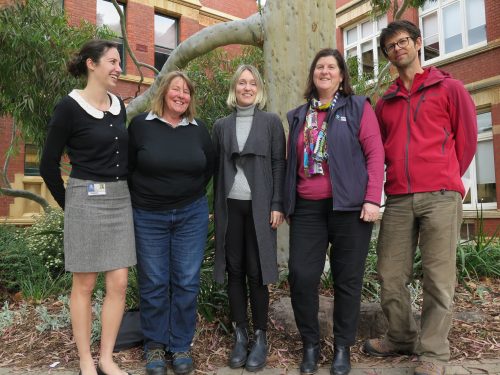Protecting Biodiversity: An Australian First with APR.Intern
PROTECTING BIODIVERSITY: AN AUSTRALIAN FIRST WITH APR.INTERN
Vast, rugged and often breathtakingly beautiful, millions of taxpayer dollars are invested in annual efforts to protect and rehabilitate the rich diversity of the Australian landscape and its native fauna.
With a need to deliver on this investment, Goulburn Broken Catchment Management Authority (GBCMA) teamed up with APR.Intern to review their restoration ecology practices in a cutting-edge project never before undertaken in Australia.
“This type of monitoring/research has not been carried out before. With efficient and effective revegetation of our landscapes critical, we wanted to understand how we could better manage revegetation across direct seeding sites to achieve biodiversity outcomes that protect native flora and fauna,” said Dr Jen Wilson, Strategic Landscape Planner, GBCMA.
APR.Intern was able to match GBCMA with Dr Elizabeth Pryde. Having just completed a PhD in tropical ecology and management, she was keen for hands-on experience in temperate Australia.
“I was really attracted to this project as the reconciliation of resource needs with biodiversity conservation is a key interest of mine. The opportunity to better understand the process and the barriers that limit conservation activity and policy implementation in Victoria was invaluable,”
Elizabeth Pryde, PhD Intern at GBCMA
Elizabeth applied her expertise to review direct seeding in temperate Australia and the impact of environmental and management conditions.
“We found a variety of factors influenced revegetation outcomes including the site’s water retention levels, ongoing management requirements, the landowner and the benefits of crash grazing to control weed cover. We also gained a better understanding of the benefits of sowing in required conditions,” Elizabeth Pryde says.
As well refining GBCMA’s revegetation and ecological diversity processes and protection outcomes, the project has been referenced to assist with design of a monitoring protocol for evaluation of direct seeding undertaken in North Eastern Victoria (1999 to 2009). It will also be used across sites to assist with identification of conservation success factors.
“This project has made a significant contribution to restoration ecology in Australia. In particular, it will improve the effectiveness of revegetation through direct seeding and species diversity. While are yet to publish a journal article, the report has been distributed to Government and all Victorian CMAs with a summary for broader dissemination to follow,”
Dr Jen Wilson, GBCMA Strategic Landscape Planner
Praising the simplicity of the program and its ability to address skill gaps for short-term research projects, Dr Wilson is quick to recommend the program to others.
“APR.Intern enabled us to complete a vital short-term project that we didn’t have the have the resources to do ourselves, providing access to expertise and the knowledge that the data would be collected, analysed and reported properly.”
Dr Wilson and her team also welcomed the opportunity to foster new talent by providing industry exposure and on-site training, while developing the skills needed to work with researchers.
“Having someone like Liz who was willing to work with us to better understand the practicalities of our ‘real’ world was really important. She ensured I was aware of the questions she was answering and understood her methods. We were all on the same page,”
Dr Jen Wilson, GBCMA Strategic Landscape Planner
Perhaps most importantly, APR.Intern has given GBCMA certainty in their practices.
“We could continue doing what we do and cross our fingers or through monitoring, evaluation, report and improvement get the outcomes we had previously just assumed we were getting. This project allowed us to change our practices in the knowledge it would result in real improvement.”




